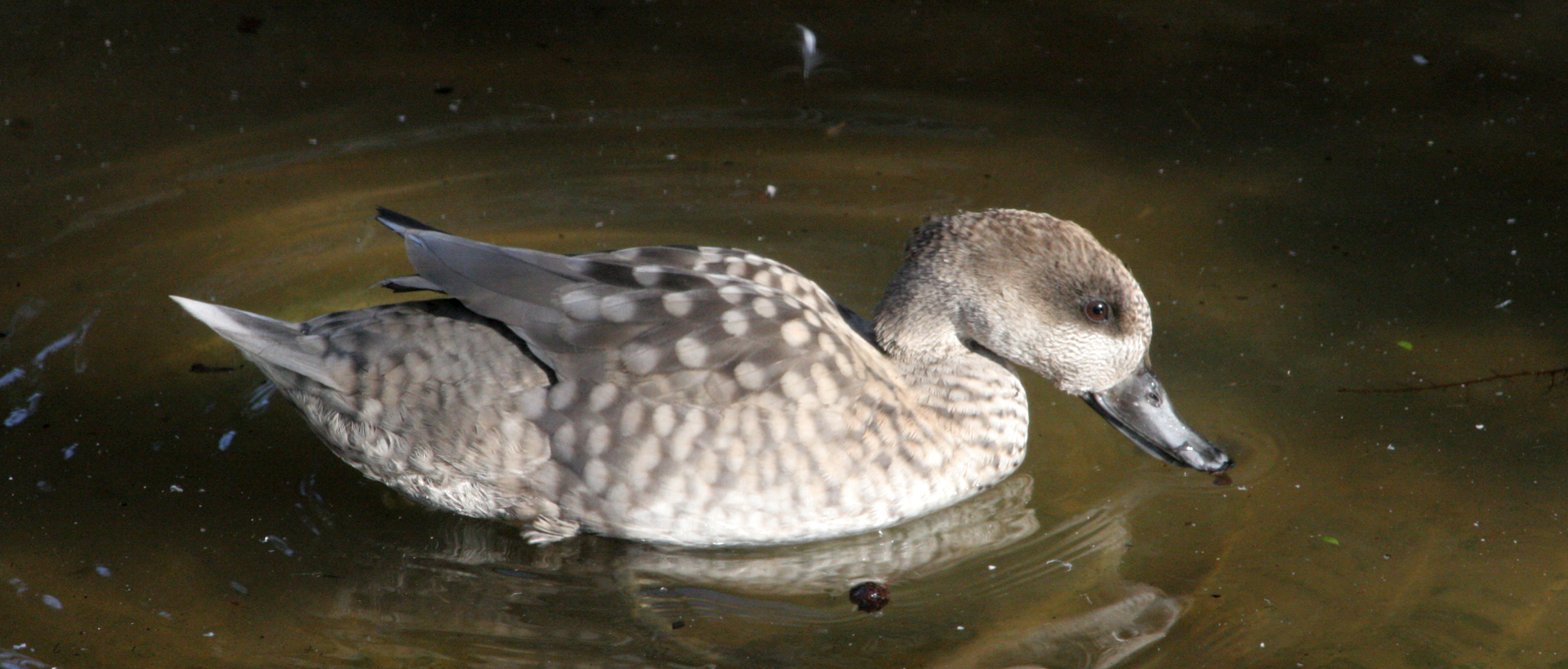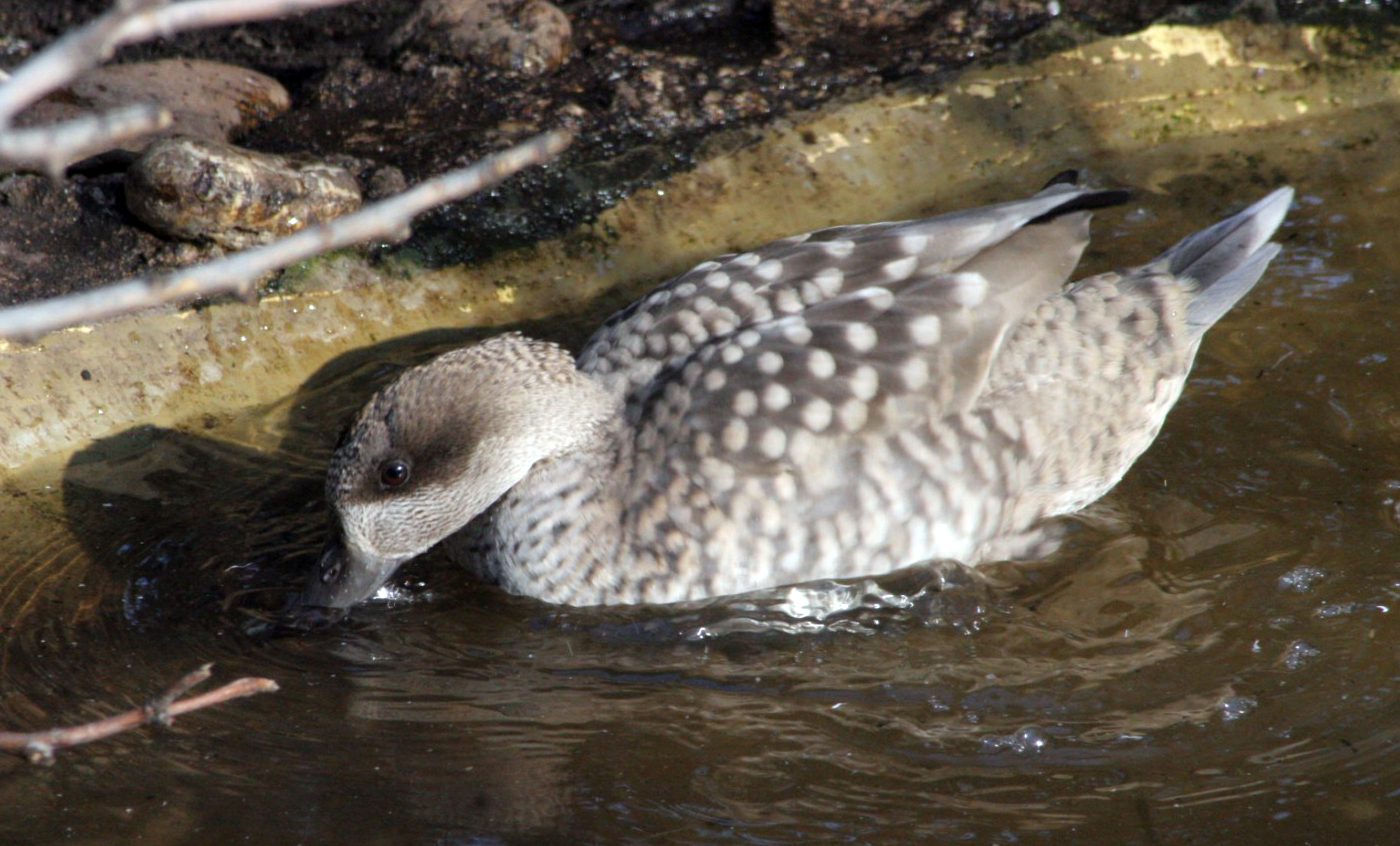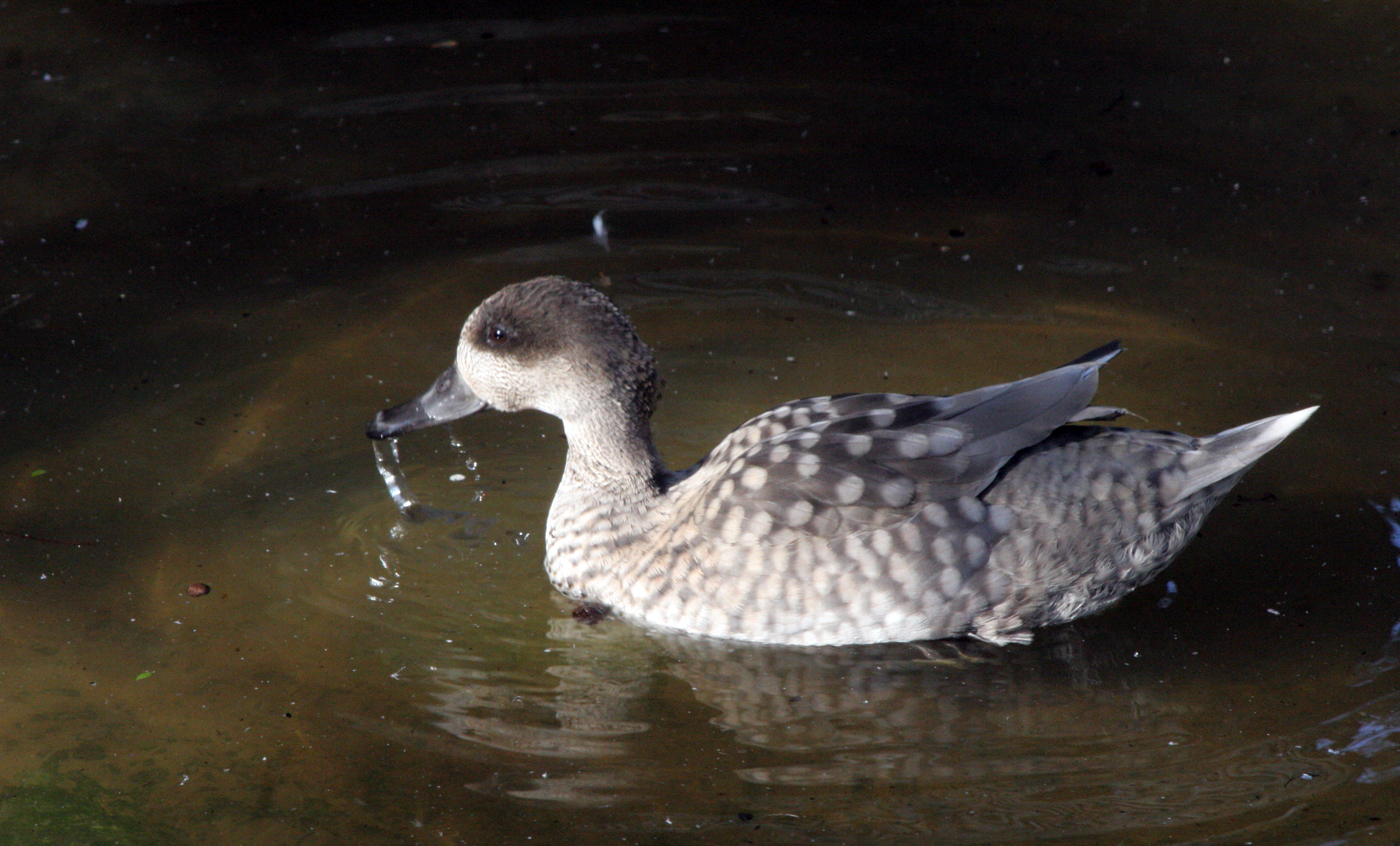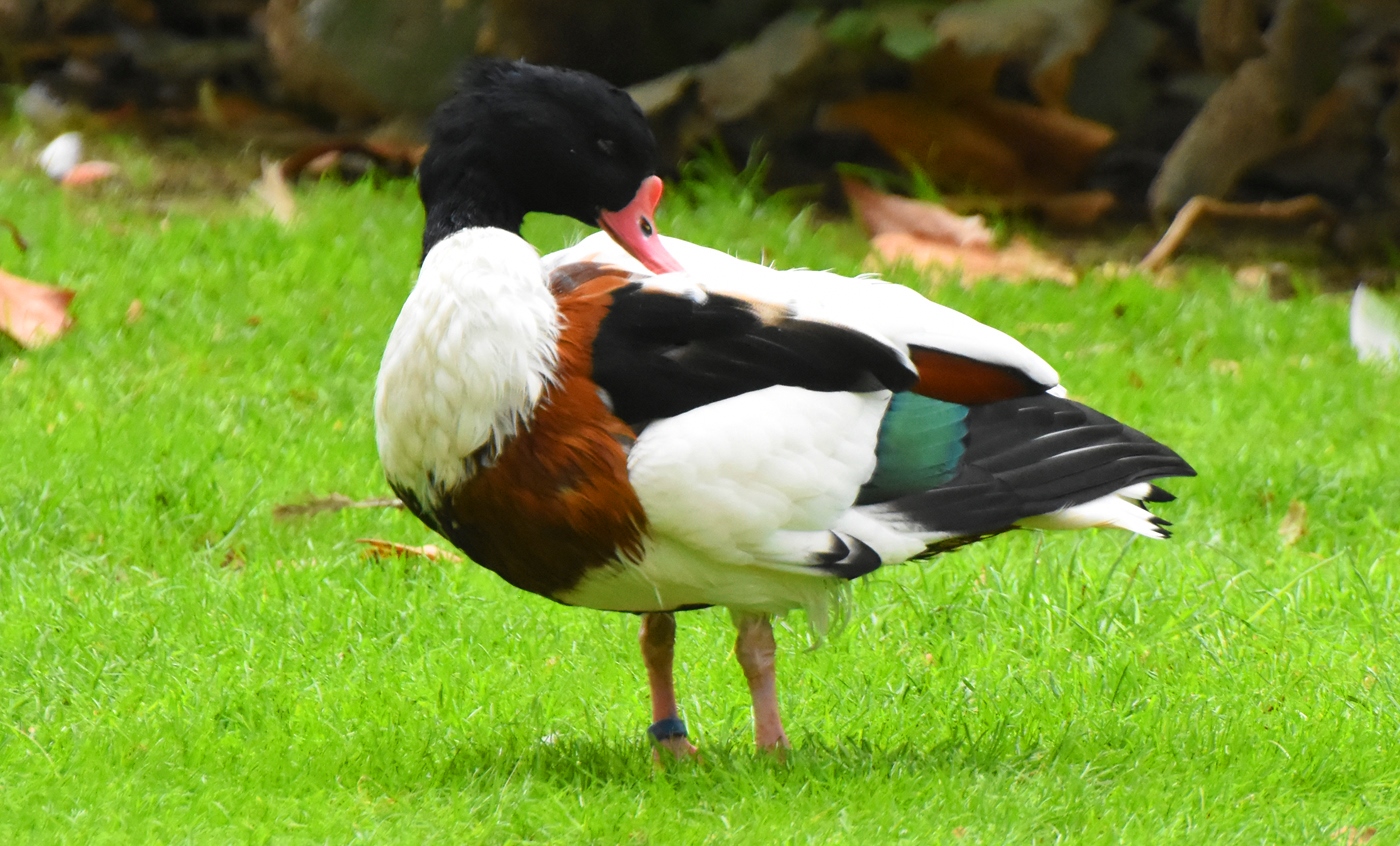Marbled teal
With spotted plumage in different tones of brown and a general light brown colour, it has a classic dark eye patch extending to its nape, like a mask, making it unmistakable.
Natural habit
Fragmented wetland areas in southern Spain, Tunisia, Morocco, Jordan, Iraq and the Persian Gulf, southern Russia to northern Pakistan and east to the north west of India.
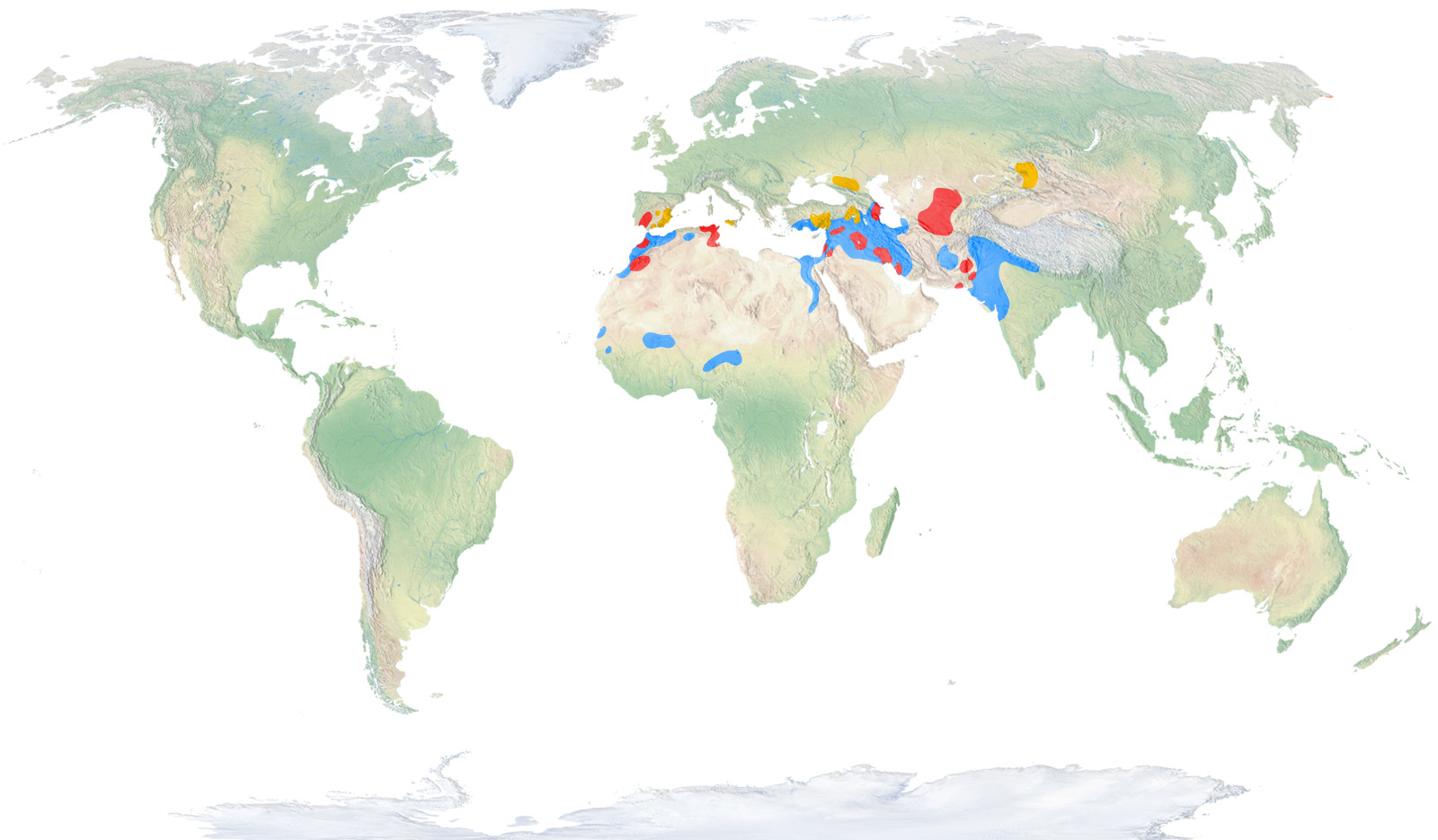
- Distribution / Resident
- Breeding
- Wintering
- Subspecies
Risk level
- Extint
- Extint in the wild
- Critically endangered
- In Danger
- Vulnerable
- Near threatened
- Minor concern
- Insufficient data
- Not evaluated
Taxonomy
Physical characteristics
Biology
Reproduction
Biology
With spotted plumage in different tones of brown and a general light brown colour, it has a classic dark eye patch extending to its nape, like a mask, making it unmistakable.
It lives in lakes, lagoons and freshwater marshes as resident and breeder in southern Spain and western Morocco, in the Near East and southeast Russia.
Its food varies throughout the year depending on availability and abundance. In breeding season—April to June—the composition of its diet is salicornia shoots and different types of insects, while in winter studies have shown that their diets are based almost exclusively on insects in the Chironomid family.
The breeding season starts in mid-April until May in North Africa. They are monogamous and form long-term pairs, breeding in small and quite scattered groups. Built exclusively by the female, the nest is normally nothing more than a slight depression in the ground, padded with a bit of vegetation, and not far from the water. They lay between five and 20 eggs, which are incubated for 25 to 27 days, only by the female, while the male takes on a security and protection role. .
It is a winter and summer visitor to different points on the planet, but never further south than Nigeria in Africa or further east than the Black Sea. Partially migratory, it tends to remain in breeding areas, sedentary, although when scattering and when they need food, they will travel relatively short distances. At the end of summer, when the lagoons are completely or partially dry, they become nomadic and move around different still-active lagoons and watering holes.
The marbled teal is one of the iconic Iberian fauna species for conservation. Although in Catalonia their populations have historically been sparse and highly localised, in the southern and eastern Iberian Peninsula, it has always been an abundant and common species. Unfortunately, in the last 30 years it has suffered steep drops—from hunting, diseases and poisoning—that have made it disappear in many spots where they formerly bred regularly, and in other spots populations have plummeted. Conservation measures and promotion by breeding and reintroduction programmes have led to the improvement in their numbers in several natural spaces on the Peninsula, especially in Andalusia (Doñana) and in Valencia (Albufera). Its status is vulnerable.



